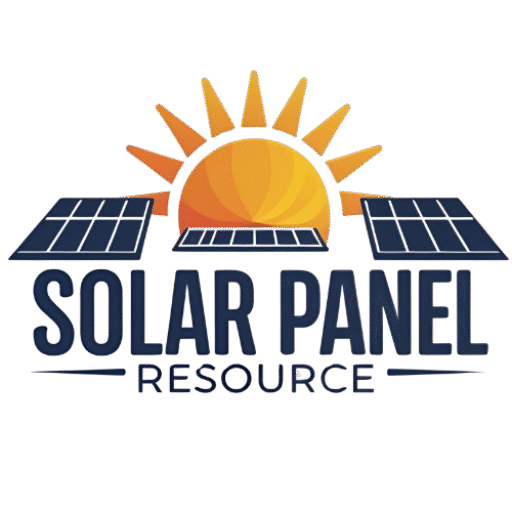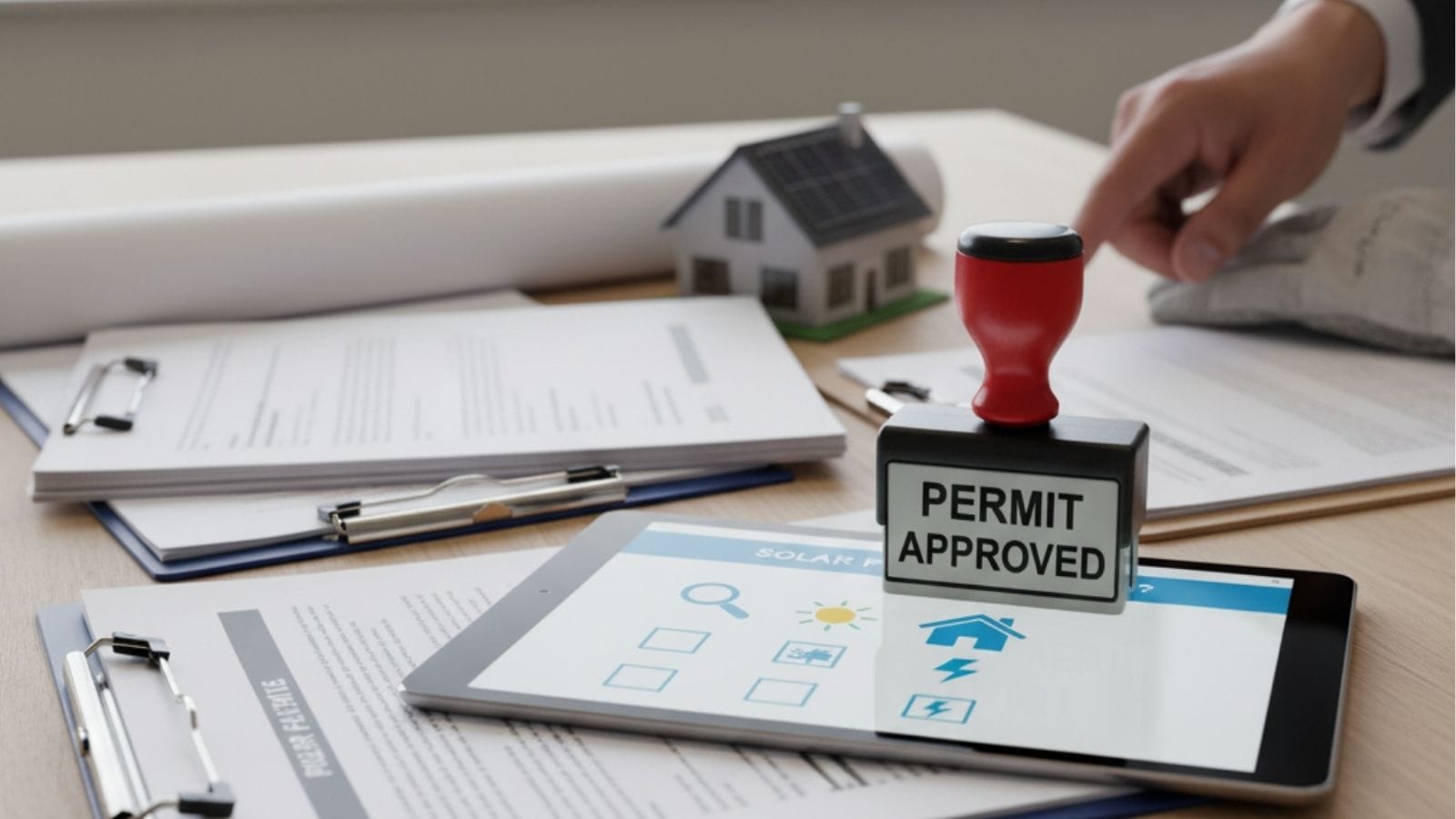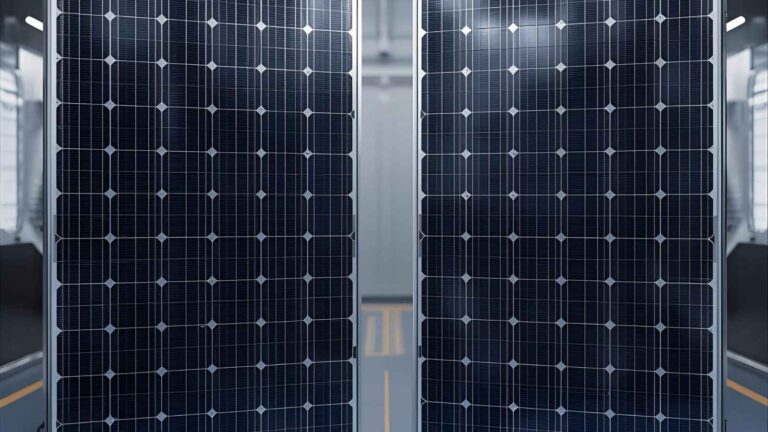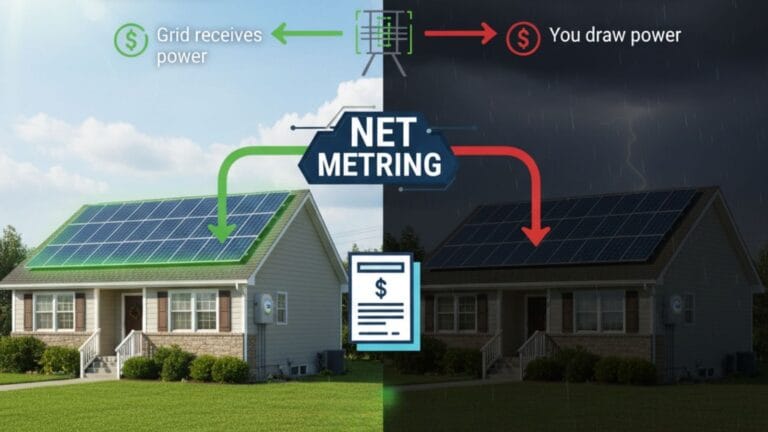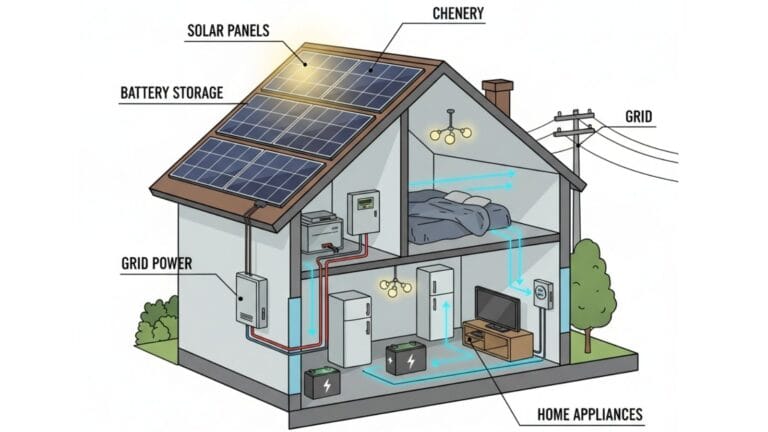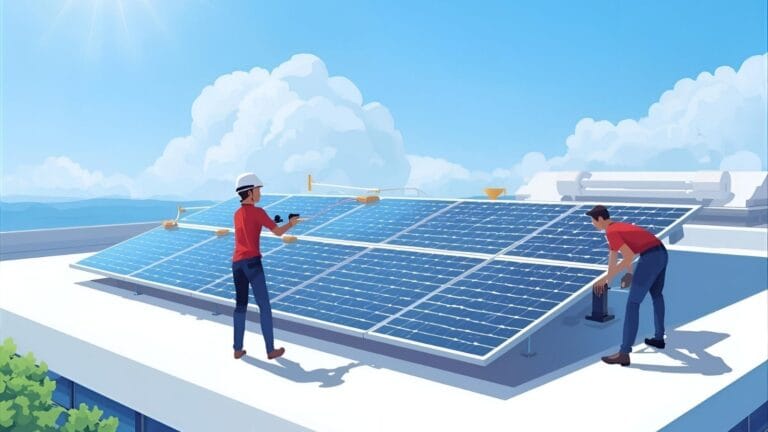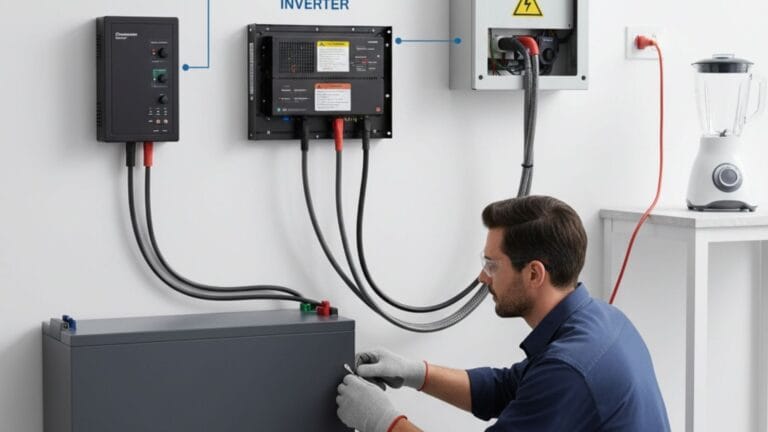What Permits Are Required to Install Solar Panels Legally ?
You cannot legally install a solar system without proper permits and approvals. These legal requirements are in place to protect you, your home, and your community. While the specific process varies, every solar project must be approved by the Authority Having Jurisdiction (AHJ), which is the local body responsible for enforcing building codes.
The “Why” Behind the Permits: Your Protection
Permits aren’t just red tape; they are a critical safeguard. They ensure your solar system is:
- Structurally Sound: A rooftop solar array adds a significant amount of weight. A building permit review ensures your roof can handle this “dead load” without compromising its structural integrity. This is especially important in regions with high wind or snow loads.
- Electrically Safe: Your solar system connects to your home’s electrical panel and, for a grid-tied system, to the utility grid. An electrical permit and subsequent inspection ensure all wiring, inverters, and connections comply with the National Electrical Code (NEC). This is a crucial step to prevent electrical fires and other safety hazards.
- Compliant with Zoning and Fire Codes: Zoning permits ensure your system meets local land-use laws, while fire permits confirm that the installation includes the necessary clearances for first responders to access and operate on your roof safely.
The Common Permit Categories
While the exact process differs, most solar projects will require these permits:
- Building Permit: This is the most common permit, covering all structural aspects of the installation. It verifies that your mounting system is secure and that your roof can support the new weight.
- Electrical Permit: This permit is required for all electrical work. It ensures that the system’s wiring, inverters, and disconnect switches are installed correctly and safely.
- Interconnection Agreement: This is a separate, but equally critical, step. You must get approval from your local utility company to connect your system to their grid. This agreement ensures safe and stable power flow and determines how you will be credited for any excess energy you produce.
- Zoning Permit: For ground-mounted systems or installations in historic districts, a zoning permit may be required to ensure your system complies with local land-use and aesthetic regulations.
The Takeaway: Trust the Process
The permitting process may seem daunting, but it is a non-negotiable part of a safe and successful installation. A reputable solar installer handles all the paperwork, from the initial submission to the final inspection. By ensuring your project is fully permitted and code-compliant, you are protecting your family, securing your investment, and ensuring a safe and reliable power source for decades to come.
Common Types of Permits for Solar Installation
Getting the proper permits for a solar installation isn’t just a legal formality; it’s a critical step that protects your investment, your home, and your safety. While the process varies by location, every professional solar project adheres to these common permit categories to ensure compliance with a range of standards.
The Purpose of Solar Permits
Permits exist to ensure your solar system is safe, structurally sound, and legally compliant. Skipping this process can lead to serious consequences, including fines, denial of government incentives, and a forced removal of the system, all of which would negate the financial and environmental benefits you’re seeking.
Common Permit Categories
Building Permits
A building permit authorizes the structural modifications to your roof or property. It ensures your solar array is designed to withstand local environmental stresses. This includes verifying that your roof can handle the additional weight of the panels, and that the system is engineered to resist strong winds and seismic forces. This is a crucial check to prevent structural damage or collapse.
Electrical Permits
An electrical permit is a fundamental safety measure. It is required for all electrical work, including the wiring, inverter installation, grounding, and the system’s interconnection to the utility grid. An inspection by a certified professional ensures that the system complies with national and local electrical codes, such as the National Electrical Code (NEC) in the U.S. or BS 7671 in the UK. This prevents fire hazards, electric shocks, and damage to your home’s electrical system.
Planning and Zoning Permits
These permits are less common but are vital for ensuring your system complies with local land-use laws. In areas with strict aesthetic, heritage, or land-use restrictions, a planning or zoning permit ensures the PV system meets visibility guidelines. This is particularly relevant for ground-mounted arrays or installations in historic districts.
Fire Safety Approval
Many jurisdictions require review and approval from the local fire department. This ensures that the system meets fire code standards. This includes confirming clear access pathways on your roof, ensuring proper labeling of all components, and verifying that emergency disconnects are easily accessible to firefighters. These measures are critical for protecting the lives of first responders in an emergency.
The Expert’s Advice: Don’t Do It Yourself
The permitting process can be complex and requires specialized knowledge of local regulations and codes. For this reason, reputable solar installers handle the entire permitting process on your behalf, from preparing and submitting the required documents to scheduling the final inspections. This professional handling is a core part of their service and your assurance that the system is not only safe and reliable but also fully compliant with all legal requirements.
Permit Process Overview
Navigating the solar installation process can feel complex, but it’s a clear, step-by-step workflow designed to protect your investment and ensure safety. A professional installer acts as your guide through this journey, managing the technical and legal requirements from start to finish.
1. Site Assessment & System Design
The process begins with an on-site evaluation by a licensed solar professional. They will assess your property’s solar potential, examining roof condition, orientation, shading from trees or buildings, and your home’s electrical capacity. Based on this assessment and your energy consumption data, the installer’s engineers will create a detailed system design. This plan is a technical blueprint that includes:
- A site plan showing panel placement on the roof.
- Single-line and three-line electrical diagrams showing all wiring, components, and connections.
- Structural engineering calculations to prove your roof can handle the load.
- Component specifications and datasheets.
A complete and accurate design is the most critical step, as it’s the foundation for all subsequent approvals.
2. Permit Submission & Review
Once the design is finalized, your installer will submit the plans to the Authority Having Jurisdiction (AHJ), which is the local building department. They handle all the paperwork for the various permits you’ll need, such as:
- Building permits to authorize the structural work on your roof.
- Electrical permits to ensure all wiring and connections are up to code.
- Zoning or fire safety approvals as required by local law.
Processing times for these permits vary widely—from a few days in highly efficient jurisdictions to several months in others. This is why a local installer’s experience in navigating the specific requirements of your area is so valuable.
3. Post-Installation Inspection & Final Approval
After your system is physically installed, local authorities will conduct a final inspection. This is the last check to ensure that the work was completed according to the approved plans and all safety codes have been met. The inspector will typically verify:
- The mounting system is properly secured to the roof.
- All wiring is neatly routed, protected in conduit, and grounded correctly.
- Safety components like rapid shutdown switches and warning labels are in place.
- The system matches the approved engineering plans.
Once the system passes this inspection, the AHJ will give its final sign-off, and your installer will submit the final paperwork to the utility company for the last, crucial step.
4. Utility Interconnection
The final stage is receiving “Permission to Operate” (PTO) from your local utility. This is the legal authorization to connect your solar system to the grid. The utility reviews all the inspection reports and, in some cases, performs its own final check to ensure the system is safe for its grid infrastructure. Once PTO is granted, the utility may install a new bi-directional meter that tracks both the electricity you consume and the excess you export to the grid. At this point, your system is officially ready to be turned on, and you can begin generating your own clean power.
References: DOE – Permitting & Inspection for Rooftop Solar , NREL/DOE – SolarAPP+
What is the downside of solar panels?

Yes, while solar offers immense benefits, a professional approach requires a clear-eyed view of its challenges. These aren’t reasons to avoid solar, but rather factors to manage with expertise and a sound strategy. Here’s an honest look at the downsides of solar power.
1. Intermittency and Reliability
Solar panels only produce energy when the sun is shining. This leads to daily and seasonal fluctuations in output, and zero production at night. This is the core challenge of solar and the most significant difference from traditional power sources. While a grid-tied system allows you to pull power from the utility when your panels aren’t producing, it means you’re still exposed to utility rates during those times.
- Mitigation: The most effective solution is battery storage. A battery allows you to store excess daytime energy for use at night or on cloudy days, improving your energy independence and providing backup power during outages. However, batteries add to the initial capital expense and require their own maintenance and safety protocols.
2. High Upfront Cost
Despite the dramatic fall in module prices, a high-quality solar system remains a significant investment. The total cost goes far beyond the panels themselves and includes:
- Inverters and Racking: The essential equipment needed to convert and mount the power.
- “Soft Costs”: These are the non-hardware costs that account for a significant portion of the total price. They include permitting fees, design and engineering costs, and labor for a qualified installer. These costs are crucial for ensuring the system’s safety and reliability.
- Interconnection Fees: Your utility may charge a fee to connect your new system to the grid.
While these costs can be high, they are offset by government incentives like tax credits and, most importantly, the long-term savings on your electricity bill. The financial return is often measured in decades, not years.
3. End-of-Life Management
Solar panels have a long life, typically 25-30 years, but they are not immortal. The question of what to do with them at the end of their useful life is a growing concern. While recycling is technically possible and can recover valuable materials like glass, aluminum, and silver, a large-scale recycling infrastructure is still developing in many countries. This means without proper channels, old panels can end up in landfills.
- Mitigation: This is an emerging challenge the industry is actively addressing. Many leading manufacturers are participating in Extended Producer Responsibility (EPR) programs, which ensure they take responsibility for their products’ end-of-life management. When selecting a system, it’s wise to choose a manufacturer with a clear commitment to sustainability and recycling.
4. Legal and Permitting Risks
This is a risk that is easily avoidable but carries serious consequences. A solar system is a permanent addition to your property and cannot be installed without proper permits from your local Authority Having Jurisdiction (AHJ). Skipping this step can lead to a range of penalties, including fines, a legal requirement to remove the system, and ineligibility for government incentives and tax credits.
Mitigation: This is a problem a professional installer solves. A reputable company will manage the entire permitting process, from submitting the engineering plans to scheduling the final inspections. This ensures your system is not only safely installed but also fully compliant with all legal requirements.
System performance can also be limited by roof characteristics — our best roof types for solar panels guide explains which designs work best.
Do solar panels really make a difference?
Solar power’s impact is significant, extending far beyond the savings on your utility bill. It has a measurable, positive effect on the environment, the economy, and the stability of the energy grid.
1. Environmental Impact: Reducing Our Carbon Footprint
The most direct environmental benefit of solar panels is their ability to reduce greenhouse gas emissions. According to the International Energy Agency (IEA), solar has become a key contributor to climate action by displacing fossil fuels. Every kilowatt-hour generated by a solar panel offsets between 0.3 and 0.9 kg of CO₂, with the exact amount depending on how dirty your local grid is. This means a single home can prevent thousands of kilograms of carbon from entering the atmosphere each year.
- Expertise: This impact is tracked and verified by organizations like the U.S. Environmental Protection Agency (EPA) through its eGRID database, which provides data on the emissions of electricity generation across the U.S. By choosing solar, you are directly contributing to a cleaner, more sustainable energy mix.
2. Economic Impact: A Hedge for All
Solar panels offer a robust economic benefit, providing a powerful hedge against rising utility rates. For the average homeowner or business, this means predictable electricity costs for decades to come, protecting them from the volatility of fossil fuel markets.
- Beyond the Individual: On a larger scale, the widespread adoption of solar improves a nation’s energy security. By diversifying the generation mix and reducing reliance on imported fuels, a country can become more resilient to global energy shocks and geopolitical instability. This contributes to a stronger, more stable economy for everyone.
3. Public Trust and Policy
The solar industry’s credibility hinges on safe, reliable installations. While a small number of systems installed without proper permits can fail, such incidents can damage the industry’s reputation and slow its overall adoption. The legal permitting process, therefore, isn’t just about red tape; it’s a critical tool for building and maintaining public trust in the technology.
Accountability: By requiring a professional design and inspection, legal installations ensure that systems are safe and perform as promised. This protects consumers and helps the solar industry continue its rapid growth by demonstrating that it is a responsible and reliable source of power.
How much money will I save if I install solar panels?

How much you save with solar depends on several factors, including your location, electricity rates, and system size. The financial outcome is also directly tied to the legal and technical compliance of your installation.
The Financial Upside: Savings and Payback
Solar provides a significant, measurable financial return. In markets with high electricity prices, such as California or parts of New York, an average residential system can lead to annual savings of $1,000 to $2,000. Over a 25-year lifetime, this can total tens of thousands of dollars.
The payback period—the time it takes for your energy savings to equal your initial investment—is now a competitive metric. In many U.S. markets, thanks to falling equipment costs and the 30% federal tax credit, the typical payback period for a residential system is 6 to 10 years. The return on investment (ROI) is even faster in areas with high utility rates or strong net metering policies.
The Importance of Legal Compliance
While savings are the main draw, the financial outcome of your solar project is entirely dependent on legal compliance. Obtaining the right permits isn’t just a matter of avoiding fines; it’s a critical step in securing your financial benefits.
Safety and Trust: The permitting process ensures your system is safe and reliable, which in turn protects the entire industry. An unpermitted, substandard installation that fails can damage public trust, hindering the adoption of solar technology as a whole.
Eligibility for Incentives: Most government incentives, including federal tax credits, state rebates, and net metering programs, require a legally compliant installation. You’ll need to provide proof of an approved permit and a final inspection to qualify for these benefits. A system installed without the proper paperwork is considered “non-compliant” and will likely forfeit thousands of dollars in financial aid.
Protection of Investment: Improperly installed systems that lack permits may be subject to legal penalties and, in the worst case, forced removal by local authorities. This results in the complete loss of your investment.
Annual savings can reach 800–1,500 USD for an average residential system, but the exact figure depends on your payback period — see our guide to calculating the payback period for solar panels for a detailed method.
What is the biggest risk of solar panels?
Investing in solar power comes with a number of risks beyond the technical and environmental. The largest and most avoidable risk is improper installation, which can lead to significant safety hazards and financial losses.
The Dangers of Improper Installation
A solar system is a complex electrical and structural addition to your property. Cutting corners on the installation process creates two major risks:
- Fire Hazards: The most serious risk is fire, which is almost always a result of poor electrical work. Badly terminated wiring, loose connections, or the use of incompatible connectors can lead to arc faults, which generate intense heat and can ignite surrounding materials. Modern systems have safety features like arc fault circuit interrupters, but these are only effective if the system is installed correctly and by a qualified professional.
- Roof Damage: Inadequate mounting can compromise your roof’s integrity. An improperly installed array may not be able to handle local wind or snow loads, potentially leading to leaks, sagging, or even a full structural collapse.
The Risk of Unpermitted Systems
The permitting process is your primary defense against these risks. An unpermitted installation is particularly dangerous because it bypasses the critical checks and balances designed to ensure safety.
- Lack of Inspection: A system installed without a permit has not been reviewed by a local authority. There is no guarantee that the electrical work is up to code or that the mounting system is structurally sound. You’re left hoping the installer did everything correctly without any independent verification.
- Legal and Financial Penalties: Beyond the safety risks, an unpermitted system can lead to fines, forced removal, and the loss of all government incentives and tax credits. This completely negates your financial return and can turn a valuable asset into a costly liability.
Insurance: Your Final Safety Net
Most homeowners’ insurance policies now include coverage for solar panels as a permanent fixture of the property. However, this coverage is not a guarantee. Insurance companies are highly risk-averse and will often require evidence of a permitted, code-compliant system to extend full coverage. If a fire or other damage is found to be the result of a faulty, unpermitted installation, your claim may be denied, leaving you to bear the full cost of repairs yourself.
What is more efficient than solar panels?
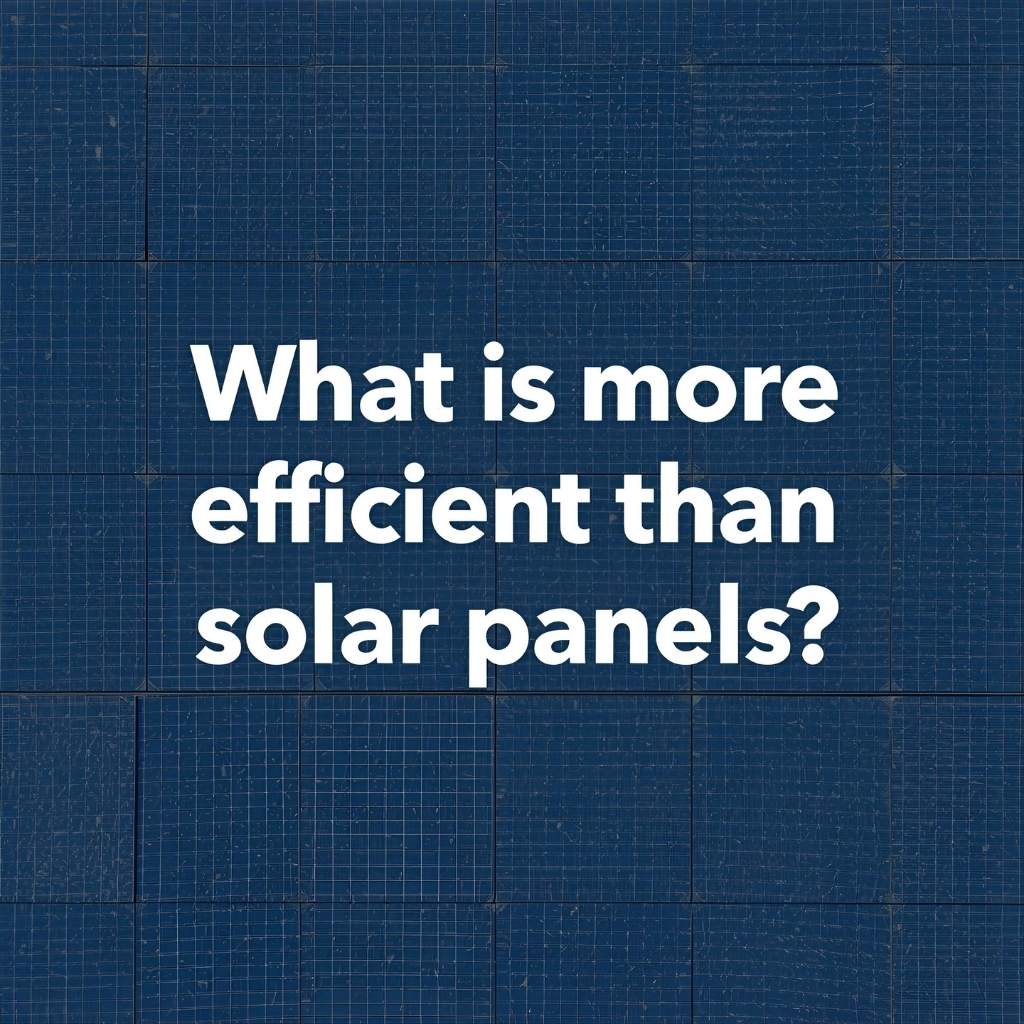
When we talk about efficiency in energy, the definition matters. While solar’s conversion efficiency and capacity factor can be lower than other sources, its overall efficiency as a technology—considering cost, scalability, and speed of deployment—makes it a leader in the global energy transition.
Comparing Apples to Oranges: Capacity vs. Dispatchability
Different energy sources have different strengths, which is often measured by their capacity factor—the actual output of a power plant over time compared to its maximum possible output.
- Nuclear plants have the highest capacity factor, typically operating at over 90% consistently, making them a reliable source of baseload power.
- Wind has a capacity factor of around 35%, and solar PV averages around 23%, both of which depend on weather conditions and time of day.
The key difference is dispatchability. A nuclear plant is dispatchable, meaning it can be turned on or off to meet demand. A solar PV plant is not; its output is entirely dependent on sunlight. However, this is changing. Concentrated Solar Power (CSP), which uses mirrors to focus sunlight and heat a fluid, can be paired with thermal storage. This allows it to store heat energy for use at night or on cloudy days, making it a dispatchable form of renewable energy.
Cost, Scalability, and Deployment
While PV lacks dispatchability on its own, its economic advantages are undeniable. The Levelized Cost of Electricity (LCOE) for PV has fallen dramatically, making it one of the cheapest forms of new electricity generation in many parts of the world. Compared to other large-scale technologies like nuclear and even CSP, PV’s modular nature makes it faster to deploy and more scalable for both residential and utility-scale projects.
The Human Element: Maximizing Efficiency with Legal Compliance
Efficiency isn’t just about technology; it’s also about implementation. This is where legal permitting plays a critical, if often overlooked, role. Permitting and code compliance are essential to ensuring a system’s efficiency. They require that the system be designed to:
Ensure Electrical and Structural Integrity: Inspections mandated by permits verify that the system is properly wired and structurally sound, preventing power losses and maintaining optimal performance for decades.
Maximize Sunlight Exposure: The permitting process ensures your system is properly oriented and angled to maximize sun exposure and minimize shading from trees or other obstructions.
How many solar panels to power a house?
Sizing a solar system is a critical first step. It depends on your home’s energy consumption, the local solar resource, and the wattage of the panels. In the US, the average household uses about 10,500 kWh/year. To offset this, a system of around 7 kWp (kilowatt-peak) is typically needed, which translates to about 18 panels rated at 400 W each.
The Science Behind Sizing
The fundamental calculation for sizing a solar system is simple: you need to generate as much energy as you consume. This is determined by three key factors:
- Your Energy Consumption: This is the most important factor. You should look at your past 12 months of utility bills to get a clear picture of your annual electricity usage.
- Solar Resource: Not all locations receive the same amount of sunlight. This is measured by the solar yield (or performance ratio), which represents the average kilowatt-hours per kilowatt of installed capacity per year (kWh/kWp/year). It accounts for local weather, cloud cover, and other environmental factors.
- Panel Efficiency and Wattage: A panel’s wattage determines its maximum power output under ideal conditions, while its efficiency indicates how well it converts sunlight to electricity. A higher-wattage, more efficient panel can produce more power in a smaller footprint, meaning you may need fewer panels to reach your target capacity.
The Permitting Puzzle: How Laws Affect Your Design
Permits don’t just authorize a project; they can indirectly dictate its size and design. Your installer must factor in local regulations from the very beginning to avoid costly redesigns and delays.
- Zoning and Planning: Some municipalities have strict rules that can limit the size of a solar array. These can include restrictions on how much of your roof area can be covered, or rules about panel height and visibility from the street, particularly in historic districts.
- Property and Setbacks: For ground-mounted systems, setbacks from property lines or public roads may limit the total usable area, which in turn restricts the number of panels you can install.
- Electrical Service Size: The total output of your solar system must be compatible with your home’s main electrical panel. If your system is too large, it could overload the existing service, requiring a costly electrical upgrade to the main panel.
A professional installer’s expertise in navigating these legal and technical constraints is crucial to designing a system that is not only financially viable but also fully compliant with all local laws.
Are solar panels a good investment?
Yes, installing a solar system is a sound investment for many households and businesses. The financial case is strong and is being driven by continued drops in equipment costs and powerful long-term economic benefits. However, to fully realize this value, legal compliance is non-negotiable.
The Financial Benefits: A Value Proposition
Solar is no longer just a way to save on bills; it is a long-term financial asset.
- Significant Cost Savings: By generating your own power, you directly reduce or even eliminate your reliance on grid electricity. In regions with high electricity rates, this can lead to annual savings of over $1,000. These savings accumulate over the system’s 25-plus year lifespan, making the initial investment worthwhile.
- A Hedge Against Inflation: Your utility rates can and will increase over time. A solar system allows you to lock in a large portion of your electricity costs, providing a powerful hedge against rising utility rates and giving you control over your energy budget.
- Boosting Property Value: A fully owned, permitted solar system is a valuable upgrade. Studies from sources like SolarReviews and the National Renewable Energy Laboratory (NREL) indicate that homes with solar panels can sell for a premium of 4-7%, and often sell faster than non-solar homes.
The Role of Legal Compliance: Securing Your ROI
The financial benefits of solar are contingent on following the rules. Skipping permits is a critical mistake that undermines your investment.
- Unlocking Incentives: Most government incentives, including the 30% federal tax credit, state rebates, and net metering programs, are only available to legally compliant systems. Without a permit, you forfeit these financial benefits, which are often essential for making a project pencil out.
- Legal & Financial Risks: An unpermitted system is an illegal system. Local authorities can issue fines and even force you to remove the installation, leading to a complete loss of your investment.
- Impact on Resale: A solar system is a major asset in a real estate transaction, but it must be properly documented. An unpermitted system can delay or complicate a property sale, as buyers may be hesitant to take on the liability of a non-compliant installation. In many cases, sellers are forced to go through a costly retroactive permitting process to satisfy the buyer’s and lender’s requirements.
In short, legal compliance ensures your system is safe, protects your investment, and maximizes its financial return and long-term value.
Do solar panels work in winter?
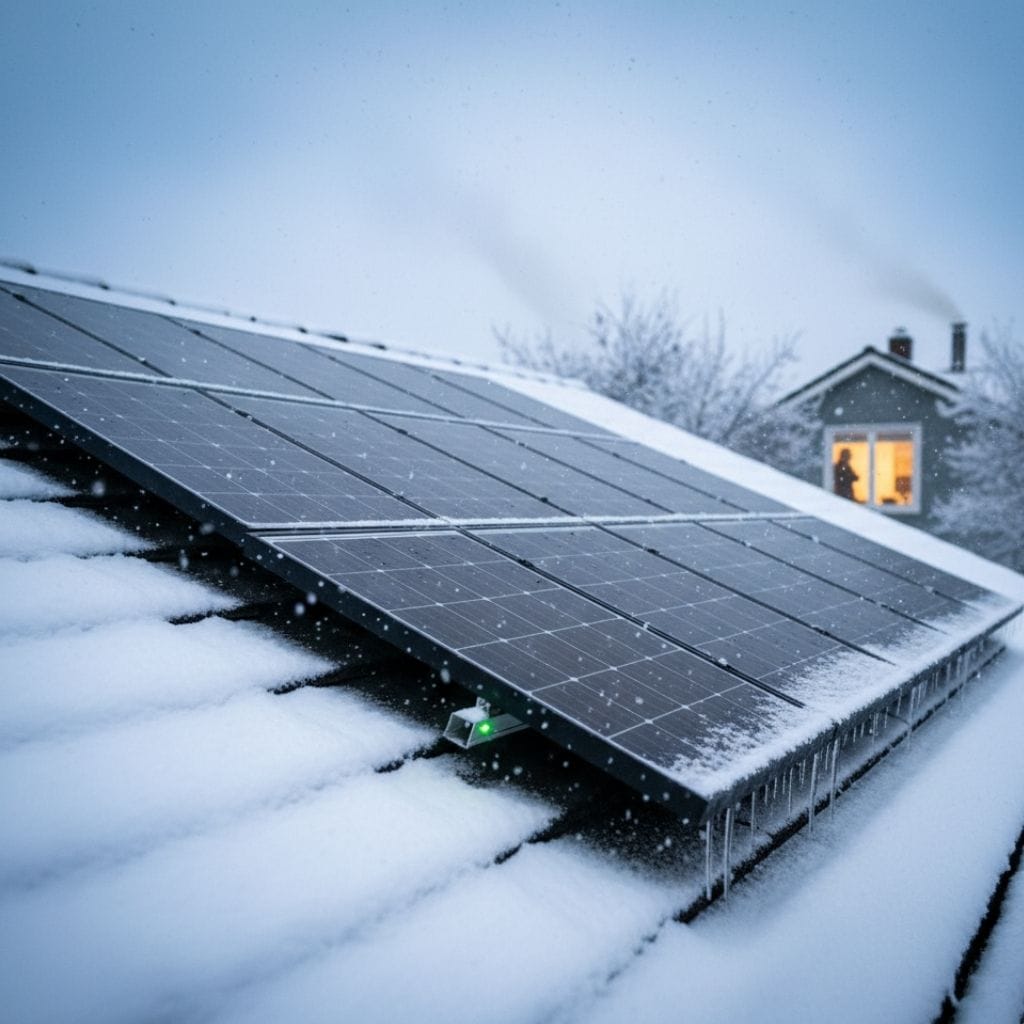
Yes, solar panels work in the winter, and in some ways, they’re even more efficient. However, their performance is a matter of both science and smart installation. The key challenges are not with the cold itself, but with shorter daylight hours and snow accumulation.
1. The Science: Cold is Actually Good for Efficiency
While it may seem counterintuitive, cold temperatures can actually increase the efficiency of solar panels. Solar panels operate best in cool, sunny conditions because extreme heat can cause a drop in a panel’s output voltage. As a rule of thumb, for every degree Celsius below a panel’s ideal operating temperature (typically 25°C or 77°F), its efficiency increases by a small but measurable amount.
The primary reason for lower winter production is not the temperature, but the simple fact that the sun is lower in the sky and the days are shorter.
2. The Challenge: Mitigating Snow and Ice
The biggest threat to a solar system’s winter performance is snow accumulation. Even a thin layer of snow can block sunlight from reaching the panels, temporarily halting energy production. However, most solar panels are designed with a slippery, glass surface that allows snow to slide off, especially when the panels are tilted and when the sun warms them up.
- Mitigation through Design: A professional installer will account for snow loads and design your system to minimize accumulation. This includes installing panels at a steep enough tilt angle to encourage snow shedding and using high-quality mounting systems that can withstand the additional weight.
- Maintenance: While panels are designed to shed snow, a particularly heavy or wet snowfall may require manual clearing. For safety, this should be done with a non-abrasive roof rake or by a professional to avoid damaging the panels.
3. The Legal Element: Safety and Structural Integrity
For homes in regions with significant snowfall, local building codes are essential for safety. Permits require a structural analysis to ensure your roof can handle the added “live load” of a solar array covered in snow. This often involves:
- Load Calculations: An engineer must calculate the maximum potential snow load and ensure the roof and mounting system can withstand it without a risk of collapse.
- Fire Safety: In some areas, fire codes may require specific layouts and pathways on the roof to ensure first responders have safe access in an emergency, especially when the roof is covered in snow.
A legally compliant, properly designed system ensures that you are not only maximizing your winter energy production but also protecting your home from structural risks.
Is it safe to live next to solar panels?
Yes, solar panels are a safe technology when installed and maintained correctly. The safety risks are minimal and are managed through professional installation, certified equipment, and a rigorous permitting process.
A Focus on Science: Addressing Safety Concerns Directly
Common fears about solar panels often relate to electromagnetic fields (EMF) and emissions. The scientific consensus is clear:
- No Harmful Emissions: Solar panels are passive DC generators. They do not produce any harmful emissions or pollutants during operation.
- Negligible EMF: Inverters and electrical cabling produce electromagnetic fields, but their levels are well below the safety guidelines set by organizations like the International Commission on Non-Ionizing Radiation Protection (ICNIRP) and the World Health Organization (WHO). The EMF from an inverter is comparable to that of a common household appliance like a refrigerator or microwave.
How Expertise and Regulation Keep You Safe
The primary safety risks for solar systems are electrical faults and, in rare cases, fire. However, these are almost entirely preventable through proper installation and oversight.
- Professional Installation is Key: The most common cause of solar system issues is poor workmanship. Faulty wiring, improper grounding, or using mismatched connectors can create electrical resistance that generates heat and poses a fire hazard. By hiring a licensed and experienced installer, you are investing in a system that is built to industry standards and will function safely for decades.
- Permitting is Your Protection: This is where local authorities play a crucial role. The permitting process requires that a qualified inspector verify the system’s safety before it can be activated. This includes checking for correct wiring, secure mounting, and compliance with national electrical codes. This third-party verification provides a critical layer of security that protects your home and your investment.
Building Trust with Neighbors and Authorities
A properly permitted solar installation does more than just protect the homeowner—it builds trust in the community. When a solar system is approved, it sends a clear signal to neighbors and local authorities that the installation is compliant and safe. This transparency is vital for ensuring solar technology continues to be welcomed and adopted as a reliable and trustworthy energy source.
Installing solar panels legally requires navigating the permitting process, which is crucial for a successful and lasting investment. This isn’t just bureaucratic red tape; it’s the fundamental step that protects your home, finances, and the integrity of the solar industry itself.
Your Investment, Your Protection
A solar installation is a major asset, and permits are what make it a secure one. Think of a permit as a certificate of authenticity for your system. Without it, you risk a number of serious consequences:
- Financial Penalties: Unpermitted systems can be subject to significant fines, forced removal, and the total forfeiture of valuable incentives like the federal tax credit and net metering. This can turn a positive ROI into a costly financial loss.
- Safety Hazards: Permits require mandatory inspections that ensure the system is structurally sound and that all electrical work is up to code. This protects your property from potential roof damage or electrical fires.
- Resale Complications: When you sell your home, an unpermitted solar system can create a major red flag for buyers and lenders. This can delay the sale or force you to go through a costly and time-consuming retroactive permitting process.
Building Trust, One Permit at a Time
Permitting is also a public good. It ensures that every solar installation is held to the same high standards, which protects not only the homeowner but also the broader community. When a system is properly permitted and inspected, it reassures neighbors and local authorities that the technology is safe and the installer is credible. This collective commitment to compliance strengthens public trust in solar, which is essential for the industry’s continued growth and success.
In the end, while solar panels offer a powerful path to a cleaner, more energy-independent future, those benefits are only fully unlocked through careful, professional, and compliant installation.

Solar Energy Enthusiast & Renewable Energy Researcher
Vural’s journey into solar energy began four years ago, driven by frequent power outages and high electricity bills at his own home. He has since gained hands-on experience with both personal and commercial solar projects. At solarpanelresource.com, Vural shares his real-world insights and in-depth research to guide homeowners and business owners on their own path to energy independence.
